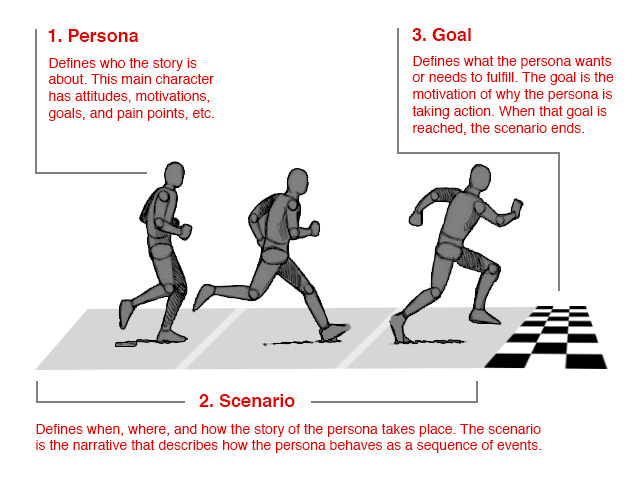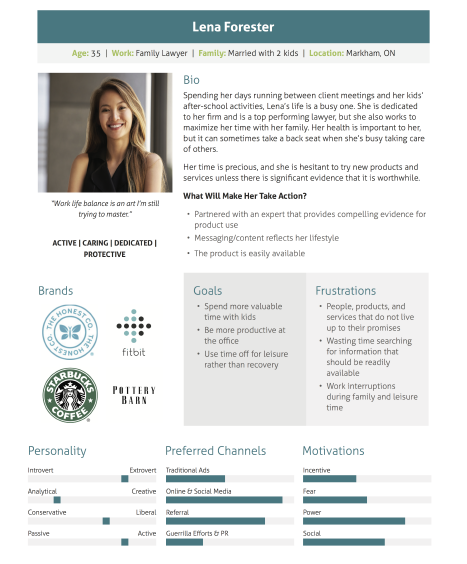In part one of our series on digital presence analyses, we explored how to perform a ‘SWOT Analysis to Review Your Digital Presence’. This included information on how to evaluate the strengths and weaknesses of your brand, as well as how to identify the opportunities and risks your brand may access and face.
However, while it’s a great step to have completed a SWOT analysis, many of you may be asking: What do I do with all of that information? What’s next?
In part two of our series, we will discuss how to leverage the information collected in a SWOT analysis to create customer profiles of whom your strategic digital presence will target.
Contents
Identifying Consumer Personas
Before you can begin actioning the goals identified in your SWOT analysis, you’ll need to use the information you’ve collected to build quality and well-rounded consumer personas.
- 44% of the B2B marketers have already discovered the power of Personas
- 83% of B2B marketers expect to use Personas in the near future.
A fictional digital persona taps into the psyche of the people who are most likely to engage with your brand. Persona’s take hours of research to develop and can include details as specific as age, gender, occupation, education, where a person shops, what types of social media networks they use, how many kids they have, and so much more.
However, as noted by Hubspot, it’s just as important to understand what personas are not:
- Target markets
- Job titles/roles
- Dependent on specific tools or technology
- Specific real people
Overwhelmed?
Think of the buyer journey as a story in three parts:
Persona: Defines the main character in the buyer story. Who they are, what they do, and why they do it. This includes their pain points, their fears, what brings them joy, and what stirs them.
Scenario: Where does the story take place? In a store? Online? How does the persona behave in that environment? Why did they arrive there instead of somewhere else?
Goal: What does the persona want out of their buying experience? What needs do they have? What is their motivation? What will make their experience a success?
Source: www.smashingmagazine.com/wp-content/uploads/2014/06/04-running-persona-opt.jpg
The goal-oriented buyer persona study is important because without knowing whom your specific target market is and how they act, how will you know how to cater your marketing initiatives? How will you know which platforms and methods of advertising you should use to connect with them?
By doing the research up front, personas will save you time and money – as your marketing ventures will target the right people right off the bat, increasing your chances of sales and conversions.
How To Create A Persona
Research is always your best tool. The more you know, that more you can strategize and make informed marketing decisions. It’s therefore crucial to first identify some basic questions about your ideal customer:
- Who are they?
- What questions do they ask?
- Why are they ideal?
If you are able to develop a persona that is based on your ideal customer (maybe even someone who is already buying from you), your persona research process will become much more realistic and informed. From there you can ask more specific questions such as:
- What is their budget?
- What does their daily life look like?
- Where so they spend most of their time?
- What they’re drawn to and why?
This data can be gathered through customer surveys, Facebook and Google Analytics, industry statistics, interviews, focus groups, and anthropological research.
Bonus Tip: Hubspot suggests that in order to recruit people to participate in your persona research interviews or surveys, it’s always a good idea to offer incentives, to be clear that your ask for participation is not a sales call, and to make it easy to say yes – by making the process simple and flexible.
Hubspot also provides some great Persona Interview Questions that are worth checking out!
Here’s an example of a persona we’ve identified for a client here at Treefrog:
Once your persona profiles have been developed, make clear and strategic decisions as to which platforms you will use to market to them, what type of language you’ll use to speak to them, and make the effort to engage your personas in the ways they’re most likely to respond.
For example, the fictional Lena Forester is most likely to engage with social media ads, is motivated by power, is analytical, wants to spend more time with her kids while also being productive at the office, and she is drawn to products that partner with trusted experts and relate to her. It’s therefore not surprising that she is a fan of family-friendly yet sophisticated brands like Fitbit, The Honest Co., and Starbucks, as each fits her lifestyle and answers to her needs and desires.
Should another company wish to market to Lena, they will have to tap into these same things – leveraging the knowledge that she likes easily accessible products, that she hates work interruptions when at home, and that she is active and protective.
However, keep in mind that the persona’s your brand appeals to can evolve and change over time as preferences and interests shift. What appeals to Lena in 2017 and 2018, may not appeal to her in the same way when her children have grown into young adults, and she’s considering retirement. It’s therefore important to update your personas over time and to consistently check the pulse of your audience.
Putting Your Personas To Work
Once you have developed your personas, you’ll be able to use the data to specify your advertising reach – especially through content development and targeted social posting.
When it comes to blogging, understanding your audience will allow you to craft topics and provide sharable content that makes your customers say, “It’s like this article was written just for me!” By connecting with your target market on a more personal and strategized way, they’re more likely to share the content, engage with your brand, and purchase your product or service.
Creating user-driven content will also benefit your SEO as valuable content improves ranking and will help connect even more potential customers to your brand.
When it comes to social advertising, platforms like Facebook allow advertisers to insert specific persona data into the Facebook Ads system, which will position your advertisement in front of people, on both Facebook and Instagram, who most meet the specifications of your targeted persona. Incredible, isn’t it?
- 56% of companies have created higher quality leads using Personas.
- 24% of companies gained more leads using Personas.
Moving Forward
Once you have verified your top priorities and have conducted your persona research; it’s time to move into brainstorming and the dissemination of tasks.
As most digital presence initiatives cannot be completed alone – you’ll need to assemble a team, communicate the information gathered in your SWOT and persona analyses, create a content campaign, and assign to-dos based on individual strengths… but those are topics for other Treefrog articles to come! *wink, wink*
Contact Treefrog Today!
Should you require assistance to identify your brand persona profiles, consult an agency that will be able to conduct deep analysis of your customers. Understanding and developing the basis for a marketing plan is no easy task – and at Treefrog, our team is here to help.
Call us at 905-836-4442 or submit a free quick quote to learn more.



